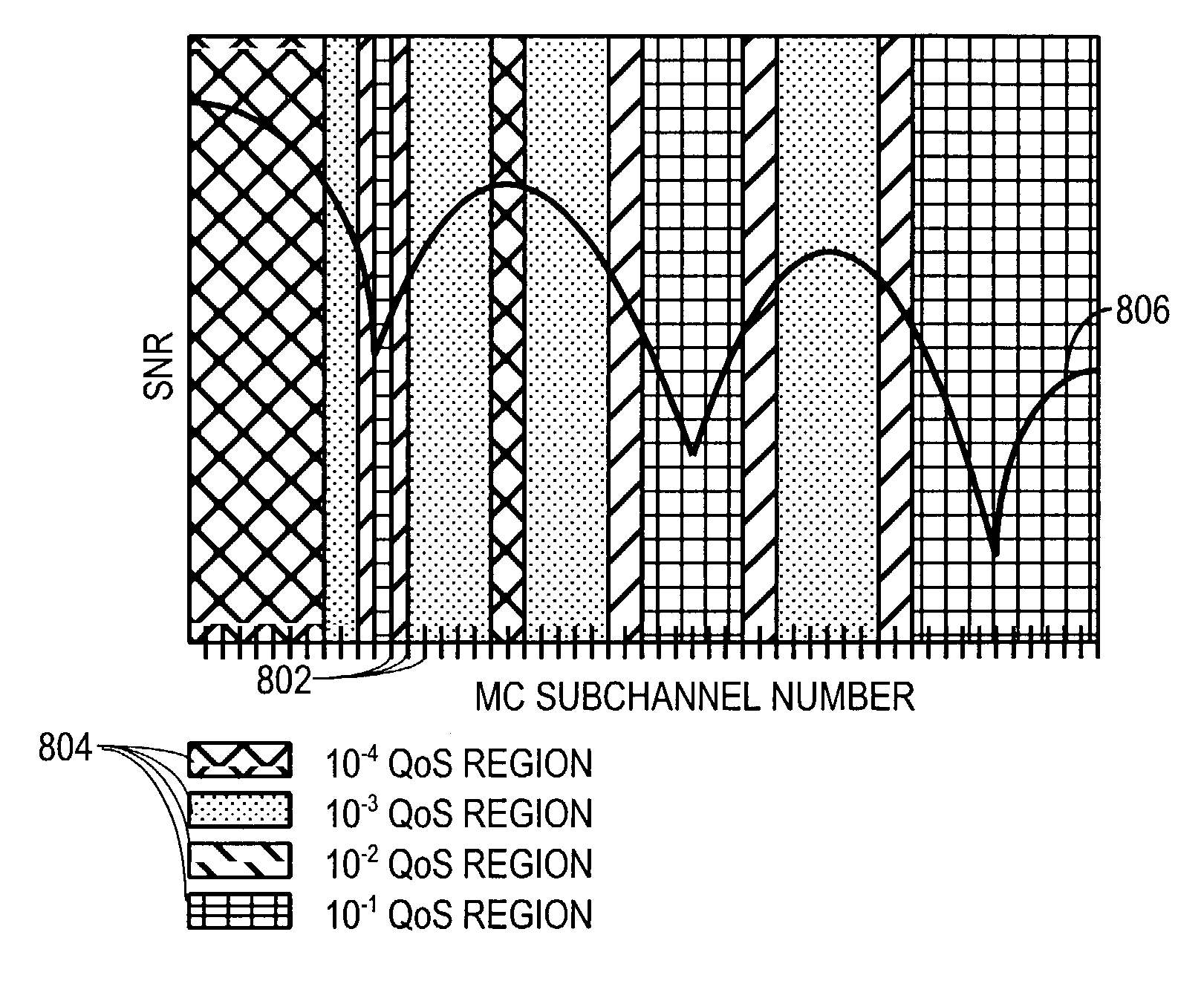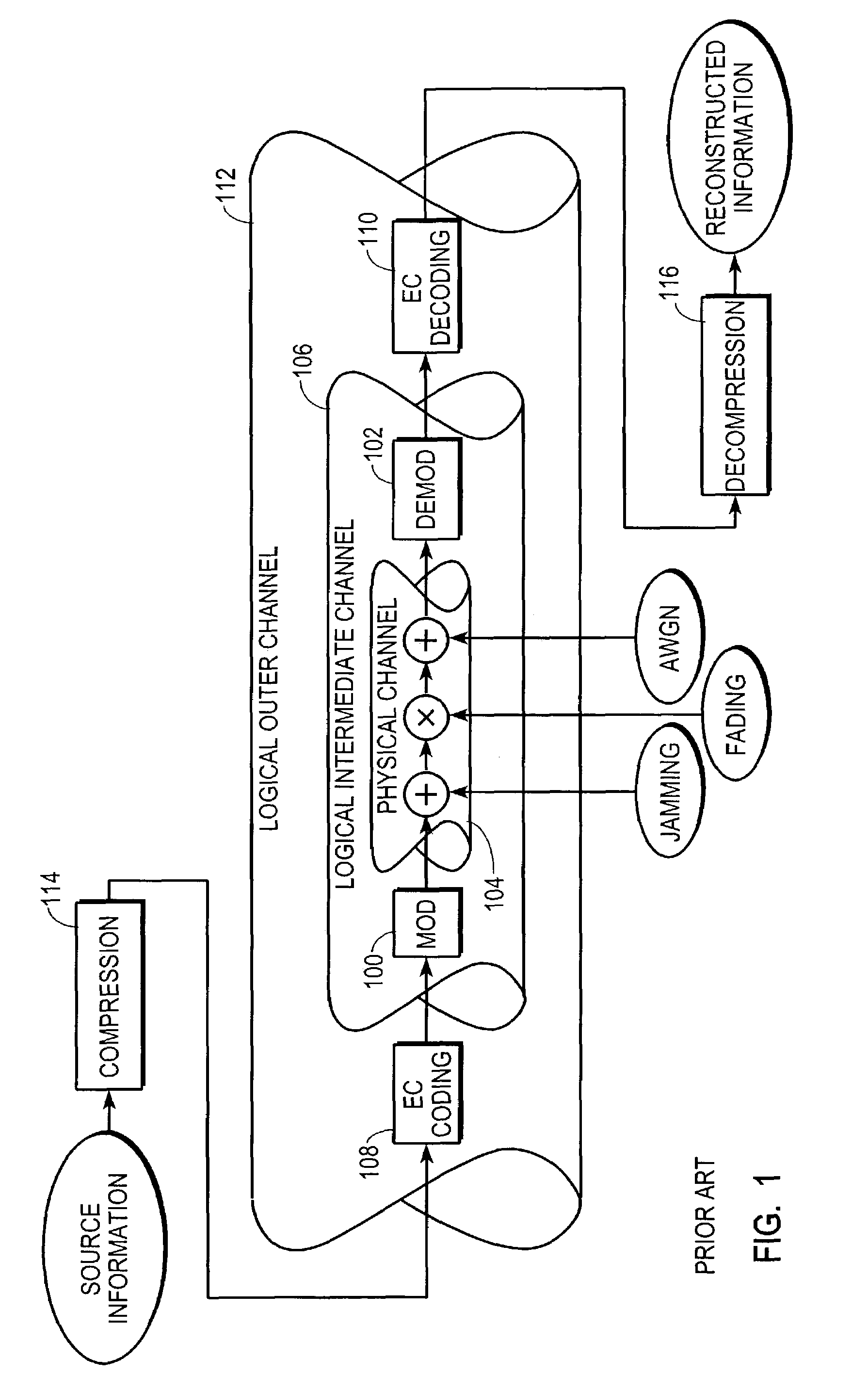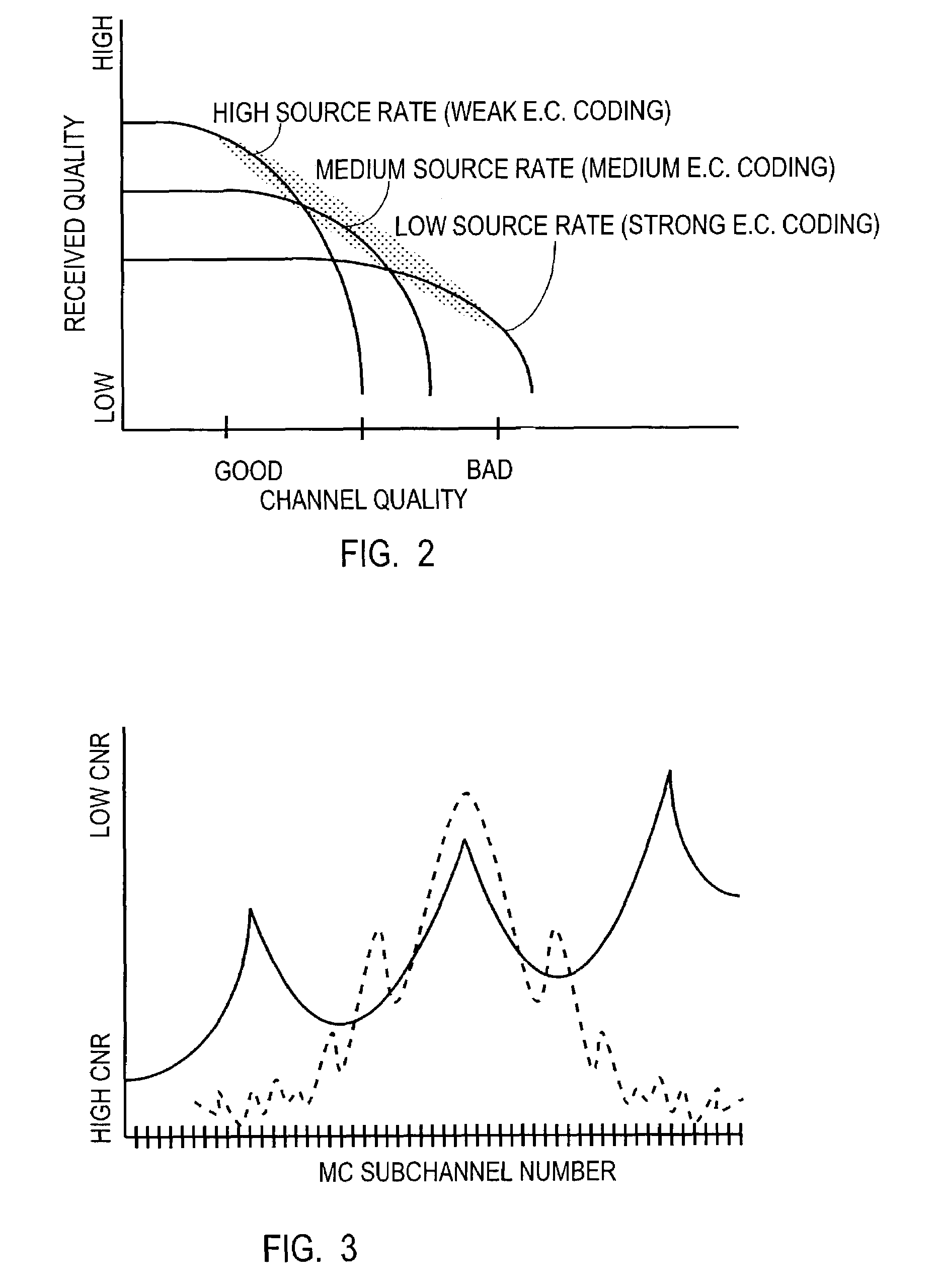Method and apparatus for encoding compressible data for transmission over variable quality communication channel
a communication channel and variable quality technology, applied in the field of communication, can solve problems such as coding failure, unsatisfactory ec coding, and increased vulnerability to communication errors
- Summary
- Abstract
- Description
- Claims
- Application Information
AI Technical Summary
Benefits of technology
Problems solved by technology
Method used
Image
Examples
Embodiment Construction
[0039]In the following discussion, the left-most one or two digits of reference numerals correspond to the number of a Figure where the referenced items can be found. For example, items referenced using reference numbers in the 400's may be found in FIG. 4, items referenced using reference numbers in the 500's may be found in FIG. 5, and so forth.
[0040]FIG. 4 shows a schematic diagram of a communication system 400 employing compression, EC coding, and modulation and configured in accordance with the teaching of the present invention. Communication system 400 includes a transmitter 402 and a receiver 404. Within transmitter 402, one or more segments of source information 406 are applied to a variable quality-of-signal (QoS) joint source-modulation coding block 408.
[0041]The type of information and the manner in which this information may be segmented are not critical features. In one embodiment, a variety of diverse information types (e.g., video, imagery, voice, data) may be jointly...
PUM
 Login to View More
Login to View More Abstract
Description
Claims
Application Information
 Login to View More
Login to View More - R&D
- Intellectual Property
- Life Sciences
- Materials
- Tech Scout
- Unparalleled Data Quality
- Higher Quality Content
- 60% Fewer Hallucinations
Browse by: Latest US Patents, China's latest patents, Technical Efficacy Thesaurus, Application Domain, Technology Topic, Popular Technical Reports.
© 2025 PatSnap. All rights reserved.Legal|Privacy policy|Modern Slavery Act Transparency Statement|Sitemap|About US| Contact US: help@patsnap.com



